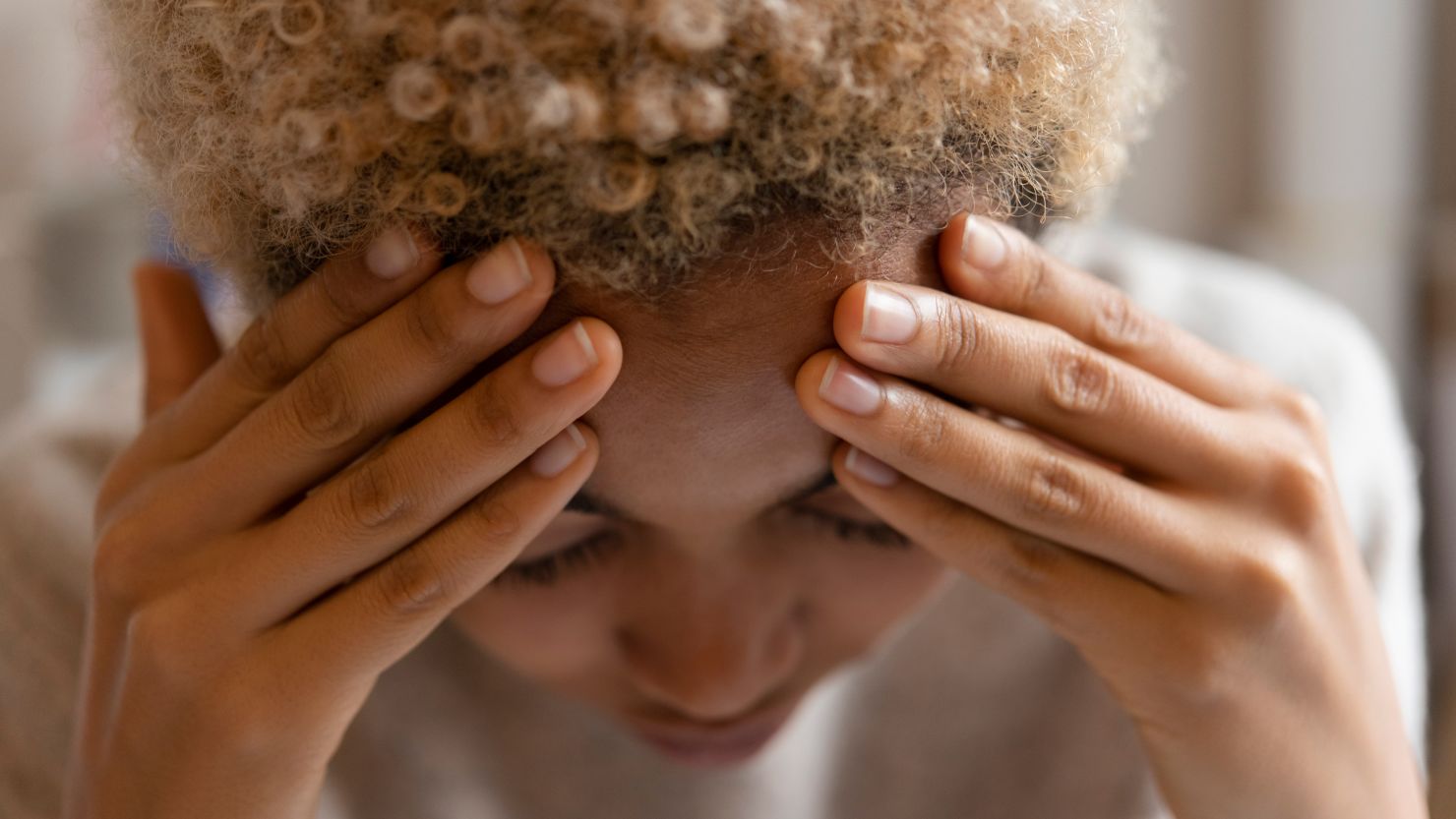Sign up for CNN’s Stress, But Less newsletter. Our six-part mindfulness guide will inform and inspire you to reduce stress while learning how to harness it.
Contrary to what internalized stigma may tell you, a migraine isn’t just a headache.
In people younger than age 50, chronic migraines are the leading cause of disability, according to a 2018 study. But many people who live with the condition can have a hard time recognizing its seriousness and getting the medical care they need for their migraines, said Kylie Petrarca, a nurse and associate program director of the Association of Migraine Disorders.
“People don’t give it the recognition it deserves,” she added.
Many doctors don’t know enough about the nuances of migraine disorders, said Dr. Frederick Godley, an ear, nose and throat specialist and president of the Association of Migraine Disorders.
But there are professionals researching and treating migraine conditions. A new study that was published Wednesday in Neurology, the journal of the American Academy of Neurology, has shown that both cluster headaches and migraines have a connection to circadian systems, meaning time of day and sleep patterns might have a big impact on those conditions.
Understanding what migraines are, why you may get them and what you can do is a powerful tool to advocate for yourself and get the proper treatment, Petrarca said.
What are migraines?
What used to be called a migraine headache is now called a migraine attack to better capture how much further the condition extends beyond pain in the head, Petrarca said.
Migraines start deep in the brain, said Dr. Stewart Tepper, a neurologist based in Lebanon, New Hampshire. The condition is better understood as a complex neurological disease that affects many parts of the nervous system, Godley said.
To be diagnosed with a migraine condition, a patient has to have at least five attacks in their lifetime that each last four to 72 hours when left untreated. The condition must also meet at least two of four criteria: moderate to severe intensity, throbbing pain, worsening with activity, and occurrence on one side of the head, Tepper said. The attacks also must have at least one of two features: nausea and sensitivity to light or sound, he added.
Where do migraines come from?
It’s hard to say exactly, but there is a lot of evidence to show there are genetic and environmental factors that lead to people getting migraines, Petrarca said.
Migraines tend to be passed down in families, but can still present differently among various family members, Godley said.
Although genetics are a major cause, some migraines can also be caused by head injuries, he added. And hormonal changes, particularly in estrogen, can really impact migraine attacks.
It is important to note, however, that there is a difference between what causes someone to be prone to migraines and what triggers them, Tepper said.
What are the triggers?
Migraine triggers are different for everyone, so Petrarca recommends keeping a diary of when you get attacks so you can track what factors might correlate.
People usually start to get their migraines after puberty, but they can show up in younger children in forms like colic, motion sickness and dizziness, Godley said.
For many women, migraine attacks tend to go along with phases of the menstrual cycle as estrogen levels change, Petrarca said. But they can also be triggered by weather changes, stress, sleep disturbances, skipping meals, dehydration and alcohol, she added.
Unfortunately, both chocolate and wine can be a big trigger, Petrarca said. But each person who suffers migraines will have their own triggers.
What are the symptoms?
When people think of migraines, they often think of head pain. But a lot of people experience many more symptoms than that.
About a third of people will experience an aura leading up to their migraine, which is “a temporary perceptual disturbance that lasts from five minutes to an hour,” Petrarca said.
That can look like blurred vision, seeing spots, numbness in the extremities or changes in speech, she added.
The list of possible symptoms that go along with a migraine is long but includes: dizziness, vertigo, brain fog, tinnitus, mood changes, yawning, neck pain and food craving, Petrarca said.
“I think kind of taking it away from just the head pain, you know there’s many, many other symptoms that also go along with a migraine attack,” she said.
And some of the symptoms, including exhaustion, can happen before a migraine, after it or in between attacks, Tepper added.
What can you do about them?
There are many medications you can discuss with your doctor to treat migraine attacks or prevent them from happening, but it is important to find a doctor who understands migraine conditions, Godley said.
Because medical professionals who are well versed in treating migraines are in short supply, you may need to advocate for yourself and your pain to get a diagnosis and effective treatment, Petrarca said.
When you get those medications, have them ready and try to take them as soon as you start having symptoms rather than waiting until later, she added.
“It’s very hard to kind of stop it once it’s started,” she said.
But medication isn’t the only way to address migraine disorders. One of the first things a person can do is make modifications to their lifestyle, Petrarca said.
Cognitive behavioral therapy is often useful to help manage the stress that can trigger migraine attacks, and taking vitamins and supplements, such as magnesium and riboflavin, can be effective in reducing migraine frequency, she said.
But getting down to the basics of health can be extremely helpful — track your migraines, create a sleep routine, exercise regularly, eat well-balanced meals, manage stress and stay hydrated, Petrarca said.




